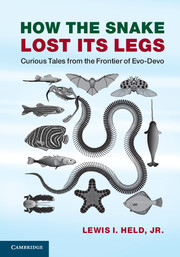Preface
Published online by Cambridge University Press: 05 June 2014
Summary
The most famous accounts of animal origins in Western literature are those of Rudyard Kipling (1865–1936). His Just So Stories (1902) offered fabulous tales about how the leopard got its spots, how the elephant got its trunk, and so forth. It remains one of the most popular children’s books of all time.
Fables certainly make good bedtime stories, but they are poor substitutes for real understanding. The foundations for modern biology were forged by Charles Darwin (1809–1882) in his Origin of Species (1859). Ever since, scientists have been amassing facts about how animal traits arose. Initially, the data came from fossils, embryos, and anatomy. Then, in the first half of the twentieth century, genetics merged with evolution to reveal the causes behind the changes [1420].
Development flirted with evolution for more than a century [46] before their union was consummated around the time of Stephen Jay Gould’s Ontogeny and Phylogeny (1977) [828,2311]. Their scion was named “evo-devo” [1559]. Evo-devo initially relied on only a few model organisms [2088], including the fly, the worm, and the mouse. The genetic circuitry of these animals turned out to be surprisingly universal, despite their superficial differences [955].
- Type
- Chapter
- Information
- How the Snake Lost its LegsCurious Tales from the Frontier of Evo-Devo, pp. ix - xiiPublisher: Cambridge University PressPrint publication year: 2014



